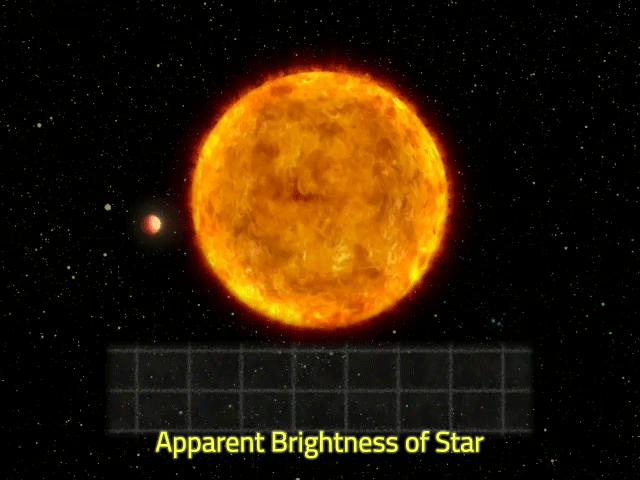The discovery of earth-sized exoplanets may take an important step forward this week with the launch of the Transiting Exoplanet Survey Satellite (TESS). TESS is only the third space-based observatory dedicated to exoplanet research. The first was CoRoT, a project of the French space agency (CNES) launched in 2006. NASA launched the second, Kepler, in 2009.
The TESS spacecraft’s mission is to detect planets orbiting stars within 300 light-years of Earth. Unlike the Kepler satellite, which looked deeply into a relatively small sector of the sky, TESS will survey 85 percent of it. And because it will survey stars that are closer than Kepler’s targets, it may find planets as small as Earth orbiting red-dwarf stars smaller than Earth’s sun.
Once a relatively close star is found to possibly have one or more planets orbiting it, additional follow-up observations may be made with ground-based telescopes, the space-based Hubble telescope, or the James Webb telescope scheduled for launch in 2020. These instruments could employ spectroscopy to determine the planets’ mass, density, and atmospheric composition.
As its name implies, TESS will detect planets using a method commonly called “transit photometry” in which the light observed from a star dims ever so slightly when a planet passes between it and the observer as shown in the NASA animation below. The satellite contains four charge-coupled-device (CCD) cameras, each covering a 24- by 24-degree sector of the sky. Collectively, the four will survey a 24- by 96-degree sector before moving on to the next one.

TESS is expected to spend one year surveying the southern hemisphere and a second year on the northern hemisphere. As the data are processed and validated, NASA plans to make them publicly available for research by others.
Economical by NASA standards
The TESS satellite weights just 350 kilograms (772 pounds) and stands less than six feet tall. It was assembled by Orbital ATK in Dulles, Virginia for an initial contract price of $75 million.

The CCD cameras were designed by Kavli Institute for Astrophysics and Space Research at the Massachusetts Institute of Technology and assembled at MIT’s Lincoln Laboratory. George Ricker leads the team of M.I.T. professors and researchers who designed the instrument and will supervise the data collection and analysis.
The TESS satellite is to be launched aboard a SpaceX Falcon 9 rocket for an initial contract price of $87 million. The initial launch was supposed to have taken place at 18:30 East Coast time today but was postponed for “additional GNC (guidance, navigation, and control) analysis,” according to a Tweet from SpaceX.
If the Falcon 9 rocket gets TESS off the ground, a lot still can go wrong after that. The TESS orbit is original. Highly elliptical, it ranges from 67,000 miles at its closest point to 232,000 miles at its apogee. Its period is 13.7 days, exactly half that of the moon. And it is inclined 40 degrees from the plane of the moon’s orbit. This unusual orbit is needed to keep the satellite far enough from Earth to avoid interference and enable it to be close enough to send back its voluminous data.
The satellite will spend most of its time looking into space. As it approaches the near point in its orbit, it will rotate and transmit its data to scientists on the ground.
TESS won’t begin its survey until about 60 days after the initial launch. It will require five firings of its thrusters to reach the final orbit, and it must get a boost from the passing moon.
If and when TESS reaches its final orbit, ground controllers will spend more days days testing the satellite and its communications links before astronomical observations begin. The data from TESS will be analyzed and released to the public as it is collected. The first release to Mikulski Archive for Space Telescopes (MAST) will be six months after the start of data collection and every two months after that. During the study period, the TESS Science Office at MIT also will compile a running list of TESS objects of interest (exoplanets, eclipsing binaries, and other variable astrophysical phenomena) that it will make publicly available as TESS scans the heavens.
Indications by TESS of transiting exoplanets must be confirmed by observations from other instruments, a process that will take more time. So it will be several more years before a more complete and validated list of exoplanets relatively close to Earth has been compiled. That’s not so long to wait. It has taken team leader George Ricker more than a decade already to get this far. For more about the TESS mission, visit https://tess.mit.edu/.

Permalink
Excellent!
Permalink
While TESS is a welcome addition to the evolution of exo-planet seeking satellites, its range is the infrared wavelength, and its target planets are around M class (red dwarf) stars. These stars are by far the most common stars in the galaxy, but, despite the discoveries around Proxima Centauri, about the least likely to host life supporting planets. Stars in class F, G, and, K are much more likely to have planets capable of water based life. These three classes of star amount to roughly one third of the known stars. Any planets discovered by TESS, (and there are likely to be a great many), will , almost invariably, be tidally locked to their star with one side boiling hot and the other frozen. M class stars have a tendency, also, to be flare stars. This is a further point against them. All this considered, though, I am excited to have TESS on the launch pad, and am looking forward to the Webb Space Telescope in a few years. Further along, I would love to see a telescope that takes advantage of the sun’s gravity lensing potential to get much more accurate views of the aforementioned F, G, and K class stars.